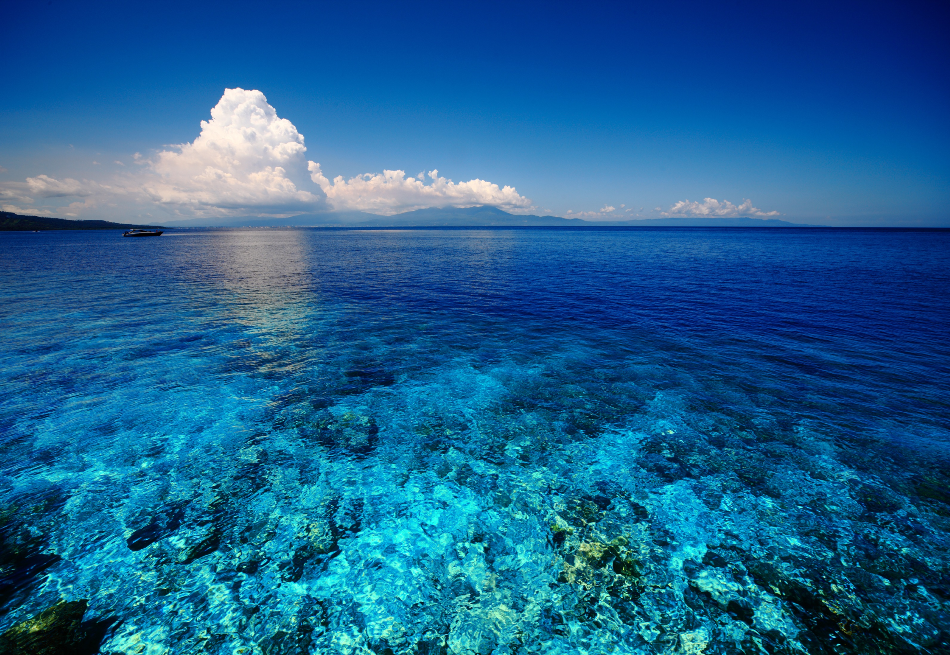
Image Credit: Shutterstock.com / Dudarev Mikhail
Researchers believe that one of the major threats to coral reef systems is sunscreen pollution. Chemicals found in sunscreen products, proven to be highly toxic to coral reefs, are becoming increasingly abundant in reef environments.
Healthy coral reef systems teem with life, supporting around 25% of all marine life while only covering around 1% of the entire ocean floor. Yet, the very existence of coral - the tiny polyps that build the reef megastructures is consistently being undermined by human activity, from anthropogenic climate change and pollution as well as the fishing and tourism industries.
One of the main pollutants making its way into coral habitats is oxybenzone, an organic chemical compound found in everyday sunscreen products available on the market. Back in 2016, a study led by NOAA and published in the journal Archives of Environmental Contamination and Toxicology, illustrated how the compound was entering the ocean via wastewater streams as well as from swimmers coated in sun lotions and other cosmetic products. It was found that oxybenzone accelerated the rate of bleaching as coral exposed to lethal amounts of the compound would bleach at lower temperatures.
Reefs in Decline
Up to 10% of the world’s reef systems are at risk of elimination by the chemicals found in sunscreen products. Each year up 14,000 tons of sunscreen ends up in waters surrounding coral reefs. As well as oxybenzone, three other ingredients that are found in sunscreen are also proven to be lethal to coral. Moreover, these three other compounds, butylparaben, octinoxate, 4-methylbenzylidene camphor (4MBC), were shown to be destructive at very low concentrations: the equivalent to a single drop of water in 6 Olympic sized swimming pools.
Back in 2018, Hawaii became the first US state to pass a bill forbidding the use of sunscreen products containing the chemicals oxybenzone and octinoxate. Between the years 1994 and 2006 several of the Hawaiian archipelago lost up to 40% of its coral reefs with 56% reef loss and damage occurring at the Big Island. Elsewhere, coral reefs have declined 50% in the Great Barrier Reef, 85% in the Caribbean and 99% in the Florida Keys.
Many of these areas rely on coral reefs for coastal protection, sources of food, and also income generated from tourism. Hawaii, in particular, generates around 60% of its tourist income from people visiting coral reefs. It was this heavy reliance on tourism and its severe impact on the health of the coral that the decision was taken to ban harmful sunscreens in the state of Hawaii. This attempt to minimize the decline of coral reefs is also an attempt to encourage regrowth of damaged coral bleached by rising ocean temperatures and climate change.
Reducing the Risk
Another NOAA led study also found that developing juvenile coral were put at risk by the UV filter Benzophenone-2 (BP-2). This chemical can be found in not only sunscreens but also other common cosmetic products including soaps, body-deodorants, and make-up. While BP-2 protects human skin against the effects of ultraviolet light it can kill juvenile coral exposed at extremely low concentrations.
While this study was conducted back in 2013, little action has been taken concerning the mitigation of the effects of BP-2. Dr. Craig Downs of the Haereticus Environmental Laboratory who led the study, said, “In the case of BP-2 pollution, there are a range of options that can be considered for reducing its impact to reefs—from working with manufacturers and innovating more environmentally sustainable products to educating consumers regarding product selection and product disposal.”
Furthermore, Downs and his collaborators at NOAA found that sunscreen pollution does not only damage the coral but also can harm other fish species and cause risks to human health. Thus, the Haereticus Environmental Laboratory has gone on to publish the HEL LIST which is a list of chemicals that are known pollutants posing a threat to ecosystem health. The aim of the HEL LIST is to reduce the overall risk to marine-based wildlife including coral as well as limiting the damage it can cause in human health.
Reef Preservation Measures
NOAA has issued guidelines that they hope will reduce the impact of sunscreen pollution on reef systems, marine life, and surrounding ecosystems. Recommendations include the use of mineral-based sunscreens in place of those containing any of the above-listed compounds as well as ultraviolet protection factor (UPF) sunwear and seeking shade between the hours of 10 am and 2 pm.
The environmental difference a UPF shirt can make compared with harmful sunscreens is considerable given the cost.
If a person puts on a long sleeve shirt during the peak UV of the day they don’t need to put on sunscreen on that part of their body. That is more than 50% reduction in sunscreen pollution.
Dr. Craig Downs, Haereticus Environmental Laboratory
While measures are taken by local authorities and environmental groups, government legislation still lags behind the research and knowledge in taking action to limit the damage. Furthermore, labels on sunscreen products need to be made clearer as to whether they are reef-safe or not to ensure consumers can make ethical choices.
Reef preservation measures not only improve the health of corals but also to entire ecosystems and human health, as well as supporting the areas of the world reliant on coral reefs for coastal protection and economic sustainability.
Disclaimer: The views expressed here are those of the author expressed in their private capacity and do not necessarily represent the views of AZoM.com Limited T/A AZoNetwork the owner and operator of this website. This disclaimer forms part of the Terms and conditions of use of this website.